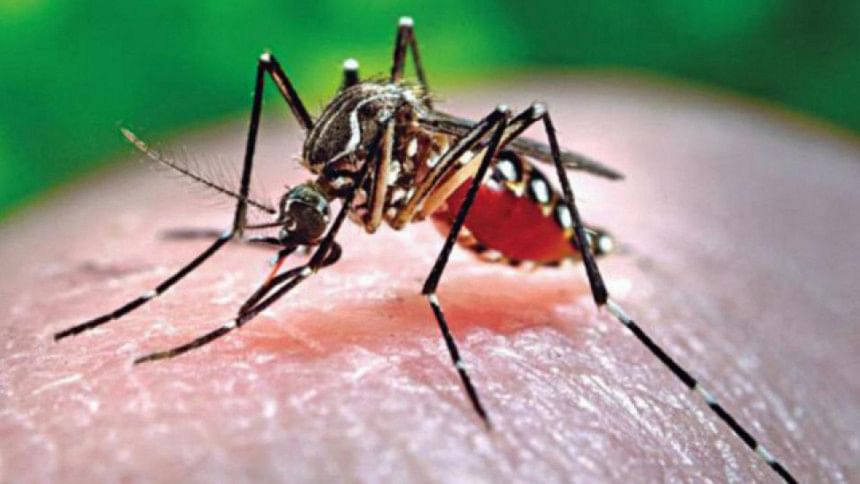Threat of dengue outbreak is ominous

With more and more breeding grounds of the mosquito variety Aedes egypti—responsible for causing dengue infection—being identified, an outbreak seems only a matter of time. Reportedly, Dhaka remains at the top among other towns and cities where the dreaded disease has struck already. And this mega city has the history of seeing the maximum number of patients in the past two decades.
We learnt from a sample survey conducted in the southern part of Dhaka that Aedes mosquito larvae were found at 69 under-construction structures, including high-rises, on the first day of a three-day pre-monsoon drive in areas under Dhaka South City Corporation (DSCC). The survey further revealed that the density of Aedes mosquito larvae in a given area this year is higher than that found in 2020 and 2021.
These findings are a wake-up call, because the full monsoon season, when the infection rate is likely to increase, is only days away. Against such a gloomy background, we wonder what will happen to the large urban population if proper measures are not put in place right away. A large number of the floating population in Dhaka spend nights on the pavements or on foot overbridges without mosquito nets. These people remain most vulnerable to dengue as they sleep in the open, huddled together.
Responding to the pre-monsoon survey data, the country's health experts have sounded the alarm bell, predicting a higher number of dengue patients this season, and accordingly they have suggested immediate destruction of the breeding grounds across the metropolis. In this regard, the health authorities (DGHS) have urged the owners of residential and commercial buildings to remain vigilant against the breeding of Aedes mosquitoes on their premises, including the rooftops and underground water reservoirs.
The dengue situation in Bangladesh has been emerging as a serious public health problem in terms of morbidity and mortality. Commonly, most of the cases occur during the monsoon period (May-August), but infections have also been recorded in post-monsoon months (September-December). The pre-monsoon case load in 2015-2017 was reported to be more than seven times higher compared to the previous 14 years.
We are hopeful that the continued awareness campaigns by the two city corporations through the media, using larvae-killing chemicals on a regular basis, and imposing fines on careless land owners would help in reducing the breeding rate to a great extent. It needs no emphasising that the greatest protection from vector borne diseases like dengue, chikungunya, zika and malaria comes from taking timely preventive measures, such as keeping premises clean and dry as well as using mosquito curtains.

 For all latest news, follow The Daily Star's Google News channel.
For all latest news, follow The Daily Star's Google News channel. 



Comments